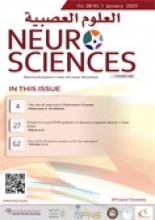Abstract
Parkinson’s disease (PD) is a progressive widespread neurodegenerative disorder affecting the brain. It is characterized by dopaminergic neuron degeneration in the substantia nigra pars compacta (SNpc). Current therapeutic options ease the symptoms of PD; however, they have multiple undesirable effects and do not slow the disease progression. Exercise by itself has many positive impacts on general health. In this review, the positive impact of different forms of exercise were found to improve motor and non-motor symptoms in PD. Exercise effects is mediate by multiple mechanisms, including the upregulation of brain-derived neurotrophic factor, α-amino-3-hydroxy-5-methyl-4-isoxazolepropionic acid receptor, and autophagy regulating proteins; and downregulates proinflammatory cytokines. In this review, the significance of exercise in PD, as well as in the prevention and maintenance of the disease was discussed. Many questions are left unanswered in this manuscript, including potential genetic factors underlying response to exercise. Therefore, further high-quality studies on humans are needed.
Footnotes
Disclosure. The authors declare no conflicting interests, support or funding from any drug company.
- Copyright: © Neurosciences
Neurosciences is an Open Access journal and articles published are distributed under the terms of the Creative Commons Attribution-NonCommercial License (CC BY-NC). Readers may copy, distribute, and display the work for non-commercial purposes with the proper citation of the original work.






